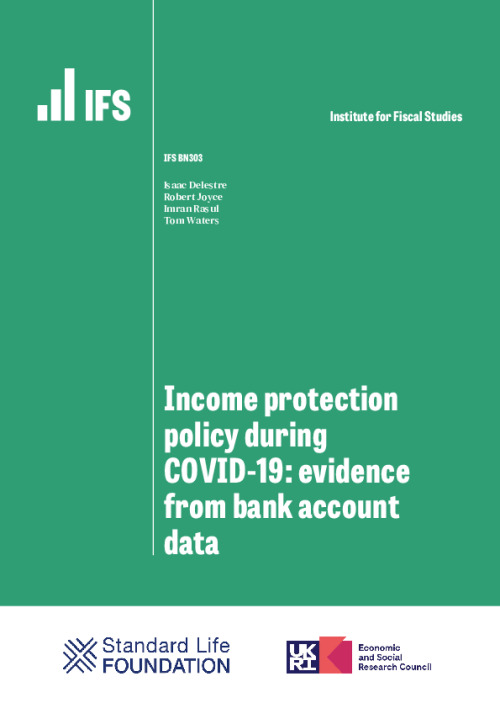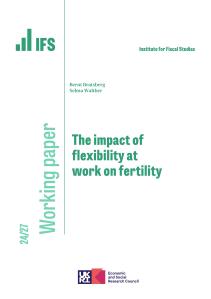The COVID-19 pandemic has had huge impacts on the UK labour market. To protect households from the most severe consequences of this, the government made temporary changes to the existing social security system and rapidly designed and implemented large new schemes. In this briefing note, we take three key elements of the income protection offered during the crisis – the Coronavirus Job Retention Scheme (CJRS) for furloughed employees, the Self-Employed Income Support Scheme (SEISS) and universal credit (UC) – and examine the path of financial outcomes for those who drew on these strands of support, both before and after the support was received.
The bulk of our analysis utilises anonymised user data from the Money Dashboard (MDB) budgeting app. These track the financial transactions of app users in real time. We use them to build a granular and dynamic picture of the financial well-being of users from the pre-crisis period, and then over the course of the crisis. The data we utilise cover financial transactions until the end of July 2020.
Key findings
- Different forms of income protection have played very different roles. On average, new claimants of UC saw a fall in net income of about 40% during the crisis (even including UC itself). For households with a furloughed employee (whose employers did not voluntarily top up the government’s support to maintain full pay), this figure is 13%. And for the self-employed receiving the SEISS grant, it was just 4% on average. That said, and particularly for the SEISS, there are people who fell through the cracks in entitlement, and the averages mask much variation in how comprehensively incomes were maintained.
- Recipients of both UC and SEISS have to make a claim and wait for their support to arrive, often seeing incomes fall one or two months before receiving the funds. This really matters. During that period, these groups reduced their spending by about 11% and 13% respectively compared with similar households who had not seen an income fall, and spending increased again when the payment arrived. After they had received the grant, SEISS recipients closed the entire gap in spending relative to similar households who had seen no fall in income. For new UC claimants, two months after their first payment, around half of the gap had been closed, leaving their spending about 6% below that of otherwise-similar households without an income fall. This is consistent with the fact that, even once it arrives, UC tends not to replace all of the lost income.
- The dynamics of the crisis for furloughed employees have been different. For those whose employers did not voluntarily top up their CJRS to full pay, by the end of June on average their spending had fallen by about 14% relative to otherwise-similar households whose incomes did not fall during the crisis. But because there was no period in which they were without support, there was no period in which their spending was cut to a much lower level.
- Those who have mortgages (disproportionately likely to be those on middle or higher pre-crisis incomes) have had access to an important source of credit during the crisis. During the pandemic, the share of households making mortgage payments fell by around a quarter for CJRS beneficiaries and by a third for SEISS recipients. The number of new UC claimants making mortgage repayments halved. This often occurred simultaneously with or even before a fall in income, and (in the case of UC and SEISS recipients) before they received government support. We know that this will largely reflect agreed mortgage holidays with providers. After receiving the SEISS, mortgage payments bounced back among that group.
- While those reliant on government support programmes saw the largest falls in mortgage payments, those groups that saw no fall in income were also less likely to make mortgage payments during the crisis. This suggests that the greater availability of mortgage holidays was taken advantage of even by those whose financial circumstances were relatively unchanged by the pandemic. 6 In the case of UC and SEISS recipients, we find some evidence of recipient households not paying council tax bills, even after receiving the payment. Some SEISS recipients also seem to have fallen behind on rent, especially during the wait for the SEISS grant.













